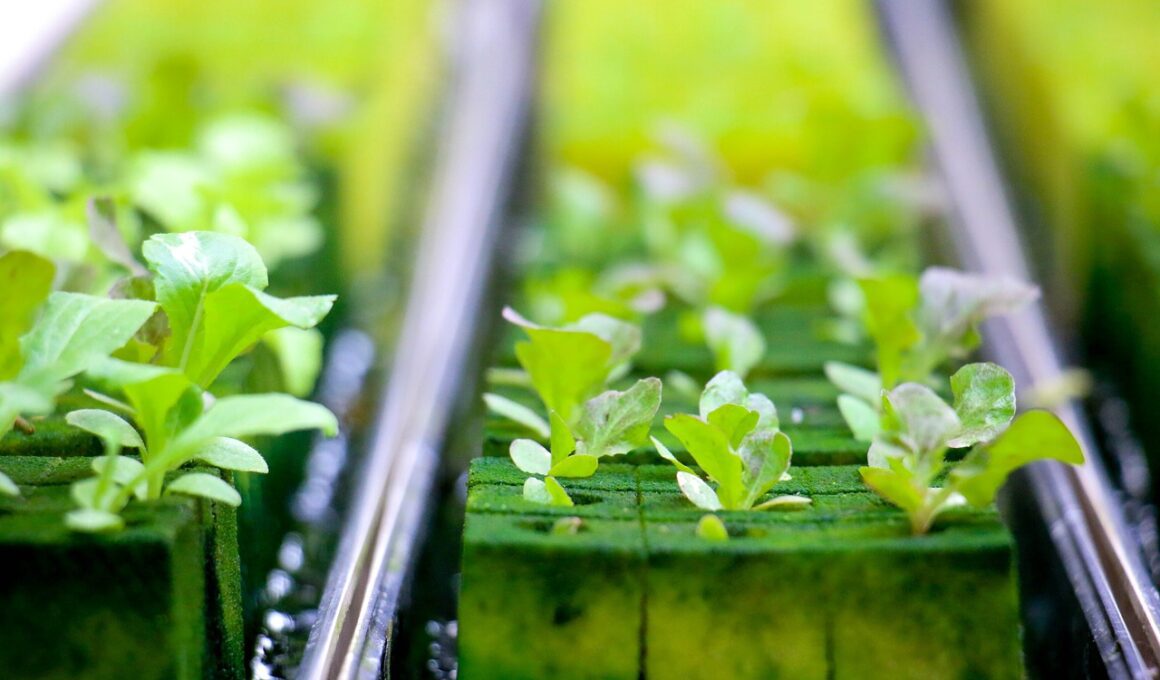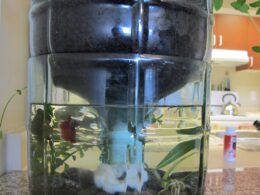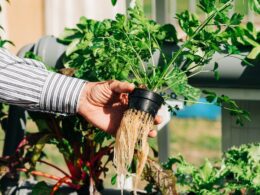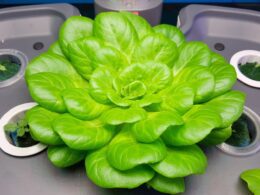Understand the Importance of Oxygenation in Hydroponic Gardening
Ensuring adequate oxygen levels is crucial for healthy plant growth in a hydroponic garden. Understanding plant respiration is key to appreciating why oxygenation is so important. Just like humans, plants need oxygen to breathe, and they use this oxygen to convert stored energy into usable energy. This process is called respiration, and it is essential for plant growth and development. The role of dissolved oxygen in nutrient uptake is also significant. When there is sufficient oxygen in the nutrient solution, plants can absorb nutrients more efficiently. This is because oxygen helps to break down nutrients into a form that plants can use. Without adequate oxygen levels, nutrients can become trapped in the water, making them unavailable for absorption by the plants. To oxygenate a hydroponic system, there are several methods you can use. One of the most common ways is to use an air pump and air stone. The air pump pushes air through the air stone, which creates bubbles in the nutrient solution. These bubbles help to agitate the water, which increases oxygen transfer. Another method is to use a water chiller. This cools the nutrient solution, which increases its ability to hold dissolved oxygen. Ultimately, choosing the right method of oxygenation will depend on the size and type of your hydroponic system.Use Air Stones to Increase Oxygenation
To maximize oxygen levels in your hydroponic setup, try using air stones. These small, porous stones release tiny bubbles of air into the water, providing a steady stream of oxygen to your plants. The benefits of aeration are numerous, including stronger root growth, faster nutrient uptake, and improved overall plant health. When choosing the right air stone for your system, consider the size of your reservoir and the number of plants you have. Larger systems may require multiple air stones, while smaller setups may only need one. Additionally, pay attention to the material and shape of the air stone, as this can affect the size and amount of bubbles it produces. Overall, adding air stones to your hydroponic system is an easy and effective way to increase oxygenation. By providing your plants with a steady supply of oxygen, you can ensure they’re able to grow strong and healthy, without the risk of suffocation or stagnant water. So why not give it a try and see the benefits for yourself?Consider Using Water Pumps
If you want to improve your hydroponic system, you might want to consider using water pumps. These pumps work by circulating water through your system, which helps to increase oxygenation and nutrient distribution. There are different types of water pumps available, and each one has its own unique uses and benefits. Let’s take a closer look at how water pumps work, the various types of water pumps, and how they can help improve your hydroponic system.How Water Pumps Work
You’ll be amazed at the efficiency and simplicity of water pumps in delivering vital nutrients to your plants in a hydroponic setup. Water pumps work by circulating nutrient-rich water throughout the system, ensuring that your plants receive the necessary amount of oxygen and nutrients they need to thrive. To ensure your water pump is working efficiently, regular maintenance is recommended. This includes checking for clogs, cleaning the pump, and replacing any worn out parts. Troubleshooting common issues, such as leaks or low water pressure, can also help prevent any potential problems. Additionally, choosing the right size water pump for your hydroponic system is crucial for optimal performance. A pump that’s too large or too small can cause problems, so be sure to research and select the appropriate size for your specific setup.Types of Water Pumps and Their Uses
Let’s explore the different types of water pumps and how they can benefit your plants in a variety of ways. There are two main types of water pumps: submersible and external. Submersible pumps are placed directly in the water, while external pumps are placed outside the water and use suction to draw water in. Here are some factors to consider when choosing a water pump for hydroponic systems:- Flow rate: The amount of water the pump can circulate per hour
- Head height: The vertical distance the pump can lift water
- Noise level: The amount of noise the pump produces
- Energy efficiency: The amount of energy the pump uses
What Methods Can You Use to Oxygenate Water in a Hydroponic System?
Oxygenating water for hydroponics is crucial for the growth and health of plants. There are several methods to achieve this: using an air pump with air stones, employing a venturi system, or utilizing a water chiller with a built-in oxygen diffuser. Each method ensures a constant supply of oxygen, promoting optimal nutrient uptake for thriving hydroponic plants.
Add Hydrogen Peroxide to the Water
Boost the health of your plants and watch them thrive by adding hydrogen peroxide to your water. This gives them the oxygen they need to grow strong and vibrant. The benefits of hydrogen peroxide include fighting off harmful bacteria and fungi, improving root health, and increasing oxygen levels in the water. It’s an affordable and effective solution that can be easily found at your local store. However, if you prefer to use alternatives to hydrogen peroxide, you can consider using an air stone or air pump to oxygenate your hydroponic system. This is a great option for those who prefer a more natural approach to hydroponic gardening. You can also consider using beneficial bacteria to improve root health and increase oxygen levels in the water. Incorporating hydrogen peroxide into your hydroponic system is a simple and effective way to ensure your plants receive the oxygen they need to thrive. It can also help prevent the growth of harmful bacteria and fungi in your system. Remember to always follow the instructions on the hydrogen peroxide bottle and use the appropriate amount for your system. With a little care and attention, your hydroponic plants will grow strong and vibrant, providing you with a bountiful harvest.Monitor Oxygen Levels and Adjust as Needed
So, you’ve added hydrogen peroxide to your hydroponic system to oxygenate the water, but what comes next? It’s crucial to monitor oxygen levels to ensure your plants are receiving the proper amount of oxygen. Fortunately, there are tools available to measure oxygen levels, such as dissolved oxygen meters. If you find that your oxygen levels are too low, don’t worry – you can adjust the oxygenation levels by adding more air stones or increasing the flow rate of your air pump.Importance of Monitoring Oxygen Levels
Monitoring oxygen levels is crucial in ensuring the success of a hydroponic setup. This is because plants need oxygen to survive, and without enough oxygen, they won’t grow properly. Oxygenated water has many benefits for plants, such as helping them absorb nutrients more efficiently and promoting healthy root growth. On the other hand, low oxygen levels can have negative effects on plants, such as stunted growth, yellowing leaves, and even death. It’s important to regularly monitor the oxygen levels in your hydroponic system and adjust as needed to ensure that your plants are getting enough oxygen. You can use an oxygen monitor or simply observe the behavior of your plants to determine if they’re getting enough oxygen. If you notice signs of low oxygen levels, such as slow growth or discoloration, you may need to increase aeration or add an air stone to your system. By monitoring and maintaining proper oxygen levels, you can ensure that your hydroponic plants thrive and produce a bountiful harvest.Tools for Measuring Oxygen Levels
Measuring oxygen levels in your hydroponic setup is a breeze with the right tools. One of the most popular devices is a dissolved oxygen meter. This tool uses a probe inserted into the water to accurately determine the oxygen concentration. However, it’s important to regularly calibrate the meter for accurate readings. Calibrating meters involves checking accuracy with a standard solution and adjusting if necessary. This step improves accuracy and ensures reliable readings. Another way to improve accuracy is by using a flow-through oxygen meter. Unlike dissolved oxygen meters, flow-through meters measure concentration continuously and provide more accurate readings. By using the right tools and maintaining them properly, you can easily monitor the oxygen levels in your hydroponic system and create a safe environment for your plants to thrive.Adjusting Oxygenation Levels for Optimal Plant Growth
Adjusting oxygen levels is crucial for creating the ideal environment for your plants to grow and thrive, and with the right tools and techniques, you can easily maintain optimal levels for maximum plant health. Here are some optimal aeration techniques and benefits of oxygenation you should know:- Increase the oxygenation of your hydroponic system by adding an air pump and air stone. This will create bubbles in the water, allowing for better water movement and oxygenation.
- Monitor oxygen levels regularly using a dissolved oxygen meter. This will help you adjust the oxygenation levels, ensuring that the plants receive the right amount of oxygen.
- Optimal oxygen levels help plants absorb nutrients more efficiently, leading to faster growth and healthier plants.
- Proper oxygenation also helps prevent the growth of harmful bacteria and pathogens, reducing the risk of plant diseases.









